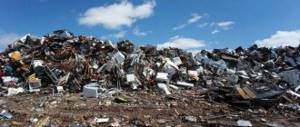Container sites for waste: SanPiN requirements, sizes, standards
A properly equipped container site is necessary to maintain order in the local area.
To ensure that residents are satisfied and regulatory authorities do not impose fines, the management company must comply with the requirements established by law for the improvement and maintenance of this facility.
SanPiN requirements for waste container sites
The rules for arranging areas for garbage containers are described in documents SanPiN 42-128-4690-88 and SanPiN 2.1.2.2645-10.
The first was adopted in 1988, the second in 2010. Since August 15, 2010, the old SanPiN has been applied in points that do not contradict the new one.
They provide sanitary standards for servicing populated areas.
When placing a container site, installing tanks on it, and drawing up a schedule for waste removal, the management company is guided by SanPiNs. Work is paid according to Article 225 of KOSGU.
SanPiN requirements for container sites are taken into account when designing new residential complexes.
Features of the location of garbage containers
It is allowed to install large 20 m3 containers for construction waste for 1 day with the permission of the city architect and the local SES.
Sites for containers for collecting household waste must comply with the following sanitary standards:
- free passage to the bins for garbage trucks;
- closed containers are placed on a flat asphalt or concrete platform with a slope for easy movement;
- the fence covers the waste container area on three sides;
- Shrubs and trees are planted around;
- a canopy for solid waste containers was installed to protect from precipitation;
- storage tanks are closed with tight lids;
- the tanks are located at a distance of 20 m from residential buildings, children's and sports complexes, and recreation areas;
- the distance to garbage containers from a residential apartment building is less than 100 m;
- the number of containers for an apartment building is calculated based on the area, but not more than 5.
Garbage containers are installed at a certain distance from institutions and public places.
For hospitals and other medical institutions - 50 m, for shopping centers and markets - 30 m, in parks - 50 m from the main crowded place, on beaches - 1 large garbage dump per 4000 sq.m.
It is not allowed to place waste tanks next to pedestrian paths, roads for vehicles, flower beds, or narrow passages.
Tanks are removed from the residential sector at least once every 7 days.
Fencing of a waste container area
Waste sheds are made from a variety of materials. The available material for fencing the site is corrugated sheeting. Construction companies offer options that vary in area and design.
A budget option – a platform for 2 standard tanks with a volume of 0.8 m3. The height is from 1 m, as required by Sanitary Regulations, and up to 2.5 m. The structure has a roof: the tanks are protected from precipitation and last longer.
Fencing for 3 containers is in demand.
The container area is fenced and equipped with lockable gates
A reliable option is a fence with a gate.
It looks aesthetically pleasing and meets the requirements of SanPiNov: garbage does not fly out of it, stray dogs do not get into it and do not scatter waste.
This type of fencing for waste container sites is suitable for courtyards of apartment buildings, kindergartens, schools, and hospitals.
Distance from garbage containers to the playground
Installation rules require that waste collection areas be located at a distance of at least 20 m from playgrounds. The greatest distance to garbage cans is 100m. A mark must be placed on the fence indicating that there is waste there.
Selection of trash cans
When choosing tanks, take into account population density and the solid waste removal schedule. In the residential sector, storage tanks with a volume of 0.8 - 1.1 cubic meters are installed.
They are made of plastic or metal.
In densely populated areas and near public places with large crowds of people, it is possible to use containers with a volume of 8 m3.
You will be interested! Garbage reform in Russia: all the pros and cons
Garbage containers should have tight-fitting lids. Models with a pedal that opens the lid are convenient and hygienic.
Modern tanks with underground storage, common in Europe, are not yet often found in Russia. They are roomy, comfortable, hygienic, but expensive (the cost of one tank is from 400,000 rubles) and require special equipment for maintenance.
and maintenance of container waste collection sites
container sites lies on the shoulders of the management company. In the absence of special equipment, the company enters into an agreement with a third party to clean the container site.
There are two ways to dispose of waste at an organized landfill:
- with changing collections. Containers are removed along with waste and replaced with clean ones;
- with irreplaceable collections. The contents of the containers are unloaded into a garbage truck and the containers are placed back.
Sanitation of waste bins
The rules for sanitizing containers are established by local SEN authorities.
During the warm season, non-replaceable containers are processed on site at least once every 10 days, replaceable containers are processed after each removal of filled tanks. The territory is equipped with drainage into a storm sewer.
Replaceable containers are washed in designated areas by specialized organizations.
Types of sites
The container platform for waste collection is located on an asphalt or concrete platform with a slope of 0.02% towards the entrance for the garbage truck. A fencing of container sites on three sides with a height of more than 1 m and a roof are required.
Solid waste sites
For household waste, fences of different sizes are made depending on the needs of residents: the smallest are designed for 2 containers, the largest - for 6. They can have a locking gate or free entry. They usually have a non-solid design: for ventilation, a gap is left between the walls and the roof.
MSW sites
In areas with a concentration of business centers or retail spaces, fencing for solid municipal waste is in demand. They are distinguished by their large capacity: 6 standard-sized containers or one 8-cubic storage tank are installed there.
Standards for placing trash cans for private areas
In the private sector, residents decide for themselves where to place garbage disposals, in what quantity and how to equip garbage disposals.
Container sites for waste are located 10 m from a private residential building.
In cases of conflict, public representatives, the Council of Deputies, and the district administration help resolve the problem.
It is advisable for owners of private houses to dispose of organic waste on their own site, while inorganic waste should be disposed of in a container.
Modern container yards
The management company responsible for servicing the settlement must:
Container site security measures
Garbage cans made of metal are stolen to be sold for scrap.
Utilities take safety precautions to preserve property.
- Garbage fences with gates are installed. They do not prevent trash from being thrown out, but they do prevent containers from being stolen.
- Locks for each container. Keys are issued to garbage truck drivers.
- Using welding, the logo of the management company is applied to the tank: attackers will no longer be able to sell them for scrap or use them elsewhere.
- Alarm installation.
- Use of CCTV cameras. A costly method, but effective.
Standardization of distances from waste storage areas to buildings and structures
New service - Construction calculators online
Question:
VSP 4.13130.2013 does not contain the requirements previously outlined in SP 4.131.30.2009 (clause 4.16: Areas for storing containers and garbage must have fences and be located at a distance of at least 15 m from buildings, structures and structures).
What distance should be maintained from the dumpster sites to the transformer substation and guest parking?
Answer:
Currently in SP 4.13130.2013 “Fire protection systems. Limiting the spread of fire at protection facilities. Requirements for space-planning and design solutions" (as amended on July 18, 2013) there are no requirements for waste storage sites in terms of the mandatory presence of a fence and location at a distance of at least 15 m from buildings, structures and structures.
At the moment, Federal Law of July 22, 2008 N 123-FZ “Technical Regulations on Fire Safety Requirements” (ed.
Arrangement and fencing of container sites for waste
To ensure rapid collection and removal of waste, container sites should be organized in the territories of residential buildings, industrial enterprises, organizations, shops and construction sites.
Containers and storage bins are installed there where waste can be disposed of. The collected waste is transported to landfills and recycling plants.
To avoid mixing different types of waste and reduce their impact on the environment, separate waste collection is organized in many places.
The container area is designed for convenient waste removal
Organization of container sites
Sites for garbage containers are organized in accordance with the requirements of SanPiN 42−128−4690−88. They must meet the following requirements :
- have a location convenient for residents and vehicles transporting waste;
- be isolated from the residential area;
- be regularly serviced;
- be practical and easy to use.
From this video you will learn about the purpose of container sites:
These requirements must be met not only by sites near residential buildings, but also by those located in isolated areas, in dacha cooperatives, and in recreational areas. A properly organized waste disposal area looks like this:
- Located at a distance of at least 20 m and no more than 100 m from residential buildings, playgrounds and other recreational areas. There are no obstacles to the passage and operation of specialized transport.
- The number of waste bins corresponds to the number of people living in the residential area and paying for waste removal, as well as the storage period and waste accumulation standards. There can be no more than 5 garbage containers and 1 storage bin in one place. The distance between garbage cans is 35 cm. If the population increases, then it is necessary to accordingly increase the number of containers and places for waste collection.
- The area for garbage containers is installed on a concrete or asphalt surface and equipped with a waterproof roof.
It is accessible to people and cars. The roof over the container platform must be waterproof - The waste area must be fenced on at least 3 sides. The height of the fence is from 1 m. It is coated with an anti-corrosion compound. There are green spaces around.
- When the air temperature is below 5ºC, garbage is removed every three days. If the temperature is above 5ºC, then garbage is removed daily.
- In summer, waste bins are disinfected at container sites. Management companies must also regularly carry out deratization of waste accumulation sites.
- Container places are equipped with signs indicating the presence of garbage cans.
A janitor can clean the area for containers. To prevent the spread of unpleasant odors, insects and rodents, it should be cleaned once a week or after garbage collection.
Containers for waste collection
Containers and storage bins can be installed at waste sites. Containers must meet the following requirements:
- have a reinforced top edge so that a forklift can grab it;
- sealed with a lid;
- have wheels for ease of movement.
Bins have more capacity. They are used both for collecting household waste and bulky waste. The capacity of standard bunkers is 8 m³.
High-strength steel is used for their manufacture. To ensure high load-carrying capacity of products, sheets of large thickness are used.
Several types of bunkers are available:
- ordinary;
- with lids;
- with folding sides.
: construction site fencing. Waste bins are more convenient for collecting and storing waste, unlike conventional bins
Their choice depends on what special equipment will remove waste from a particular site. Some machines find it more convenient to work with conventional hoppers, others with folding sides. Bins with lids are the most hygienic.
They allow you to keep the surrounding area clean. Garbage collection containers can be painted in various colors. Household waste is not classified as hazardous, so there are no rules for coloring it.
The modern market offers a large number of different containers and bins for waste. You can always choose products that are best suited for a specific site.
Violation of the law
When organizing container sites, gross violations of waste collection requirements are not uncommon. These include:
- installation of garbage containers near entrances;
- lack of fencing of waste container areas;
- lack of concrete base;
- installation of garbage cans outside the container site;
- use of storage bins without permission or for other purposes.
All this can be recognized as an administrative offense, for which a fine will be collected from the developer, management company or other responsible organization.
If waste is not removed from a residential area, then residents who pay for this service can file a claim with the management company. It is compiled in any form.
The claim must contain the signatures of at least 2 residents and the head of the house. The management company is obliged to consider the claim within three days and correct the situation within 10 days.
A recalculation must also be made for the time when garbage collection was not carried out.
Correct installation of a container site is an important condition for the normal life of residents of apartment buildings.
Timely waste removal ensures the absence of harmful substances and unpleasant odors in residential areas.
It prevents the proliferation of rodents, flies and other unpleasant insects that are carriers of dangerous infectious diseases.
Source: https://zaborprofi.com/postrojki/obustrojstvo-kontejnernyh-ploshhadok.html
How to install a trash container
Installing the container itself is not particularly difficult, especially if it is designed to weigh no more than 1 ton. Such containers can often be seen in the courtyards of apartment buildings or along the road. The difficulty is preparing the site for installing the container. Typically, the allocated space is arranged in the following order:
- select and measure a site for the installation of containers.
- determine the quantity and shape of the tank.
- prepare the coating. The land is leveled and cleared of vegetation. The top is covered with gravel and sand.
- covered with asphalt or reinforced concrete slabs. Recently, paving slabs have been increasingly used. The main thing is that the place where the waste collection tanks are located is on a level place that is not washed away by rain.
- the area for garbage cans is enclosed with a curb or fence. It must be fenced on three sides. The fence should not interfere with the access of the garbage truck and the operation of the crane for lifting and emptying the tanks.
- install containers.
When choosing a site, you should not only take into account the distance and conditions for garbage removal, but also how convenient this location is, first of all, for the residents of the houses. Equally important is the correctly selected container volume and quantity. After installing the garbage cans, you should contact the appropriate service to hand over the facility for maintenance.
Distance from garbage containers to a residential building: SanPiN and SNiP standards
In places where garbage is stored, rodents, cockroaches and other animals and insects gather, spreading various diseases.
To protect your home from unwanted neighbors, you must observe the distance from garbage containers to a residential building and other requirements of regulatory documents SanPiN and SNiP standards.
If stored improperly, waste can cause a fire, poison the air with toxic odors, and seep into groundwater.
Garbage cans near a residential building
Requirements for organizing space for garbage containers
The basic requirements for the distance to various objects and the organization of sites for containers are set out in SanPiN 42-128-4690-88.
It states that the minimum distance from the house to the garbage container is provided for by sanitary standards and is 20 m.
For ease of use, the maximum distance is designed.
Experts have determined that it is convenient to use garbage cans if they are located no further than 100 m. For greater distances, it is inconvenient to travel daily with a bag or bucket of waste.
The place for the container must be arranged properly.
A concrete or asphalt platform is made, protruding 100–200 mm above ground level. The tanks are placed on it. Water from the ground should not get into the containers after rain and increase the rotting of their contents.
On one side there is free space, a road equipped for a garbage truck passes through. It should be covered with gravel or have a hard surface that allows access in any weather. The area with containers must be fenced on the three remaining sides.
The number of garbage cans is calculated according to the number of citizens living in the house or two neighboring residential buildings for which the bins are installed. A maximum of 5 of them are allowed on one site.
As a recommendation, it is indicated not to place garbage cans on the side of the front entrance to the house. In addition, between the house and the garbage container there should not be:
- recreation areas;
- sports grounds;
- pedestrian and bicycle paths.
Near the place where the trash can is located, dogs and other animals are allowed to walk in designated areas. Owners must ensure that animals do not run into the area where garbage is stored.
Garbage containers - types and purpose
Installation of garbage containers requires special attention. An incorrectly selected and positioned trash can can cause various parasites to appear in your home: rats, mice, cockroaches. It can also lead to fires and fires. During rotting, many foods release toxic and explosive methane gas, which can cause a fire.
Choosing a container begins with assessing the following parameters that a box for collecting household and industrial waste should have:
- Volume,
- The material from which it is made is
- Container shape,
- The presence or absence of a cover,
- Price,
- Availability of additional functions, for example, wheels for moving the container,
- The weight it can bear is
- Own weight,
- Strength,
- Durability,
- Operational safety.
In residential households, containers with a volume of up to 4 cubic meters are mainly used. meters and can withstand up to 1 ton of household waste. They can be made from both plastic and metal. Usually they are installed 1-5 pieces per site. They are mainly installed near roads on the streets, less often in the courtyards of multi-storey buildings.
Some garbage containers can be sectional in type and are intended for sorting waste of the following types: food, non-food, paper, plastic, glass, etc. Such models are very expensive and are not particularly popular, since garbage trucks still dump garbage into one body. Therefore, there is no point in overpaying for such garbage containers in modern conditions.
For territories where production enterprises are located and large volumes of waste are expected to be removed, containers with a capacity of 5 to 20 tons or more are installed. They are usually equipped with strong wheels and transport such waste bins by attaching them to a truck or tractor. When arranging sites for such models of garbage containers, you should consider the access route to the tanks for garbage trucks.
Installation, arrangement and maintenance of a container site for solid waste collection
An ecological and rational solution for eliminating human waste is to equip residential complexes with container sites.
Recently, apartment owners in multi-storey buildings are increasingly abandoning the usual garbage chutes, preferring to install sites equipped with waste collection containers.
The modern market offers a wide range of containers for accumulating various types of waste, allowing you to choose the color and configuration.
The main advantages of these waste collection sites are ease of maintenance and aesthetic appearance, which becomes a harmonious addition to the architecture of modern residential complexes.
What is a register of container sites
In addition, the Government of the Russian Federation decided to create a unified register of container sites. The register is a database that includes all information about each container site located within the city.
- Location: address data, geographic coordinates and layout to scale on the map.
- Technical characteristics: material from which the fence is made; occupied area, number of garbage cans.
- Information about the owner of the territory.
The owners provide the following information:
- Legal entities indicate the name of the organization (in full), registration data and actual address.
- Individual entrepreneurs indicate passport data, registration number and residential address.
- Individuals provide information about their actual residential address, contact information and passport information.
The register contains information about the sources of waste.
Requirements for organizing the site
The standards for equipping MSW accumulation sites and their maintenance are regulated by SanPiN documents.
- To equip a waste collection site, it is necessary to obtain the consent of the city municipality, the SES service and the company involved in servicing the territory.
- The number of garbage cans installed on the premises depends on the number of people living in the residential complex. Installation rules limit this quantity to 5 containers.
- The container site must be equipped with a concrete base and be on a slope to facilitate the movement of garbage cans.
- The container site is fenced on 3 sides; options for making a canopy are not excluded. Places where waste accumulates are fenced with metal structures or plantings that allow you to keep the waste within the designated area.
- Containers are intended exclusively for the accumulation of solid municipal waste; the discharge of construction and industrial waste is prohibited.
- Garbage cans are equipped with tight-fitting lids that perform the following functions: protect from moisture during precipitation, prevent the spread of garbage in strong winds, and prevent the entry of animals
Regulatory documents
Installation of container platforms requires compliance with the norms and rules provided for in the following documents:
- SanPiN 2.1.2.2645-10
- SanPiN 42-128-4690-88
Since this document includes many requirements, most owners use the services of companies that install containers and remove waste.
Types of sites
There are two types of container sites:
- Open type.
- Closed type.
Most often, open-type container sites can be found in residential areas. The popularity of this type is due to its low cost and ease of use. This option is budget-friendly due to the lack of doors.
Indoor venues are in less demand. They are equipped with swing or sliding doors; the equipment may also include a lock or sliding mechanism.
The size of the container site is usually designed to accommodate several containers. To collect waste from one apartment building with several entrances, 3-4 garbage cans will be enough.
Some projects include landscaping by installing not only containers for collecting solid waste, but also containers for accumulating plastic and paper waste.
Types of waste collection containers
In Russia, the following types of containers are used for collecting household waste:
- Regular containers.
- Storage bins for bulky waste.
- Bins for small-sized waste.
For some models of waste bins, the package includes a lid and wheels.
Bulky solid municipal waste, such as construction waste and parts of old wooden furniture, must be disposed of in storage bins.
This type of container is distinguished by capacity and load capacity. The storage hopper is equipped with special clamps that allow it to be mounted on a garbage truck.
Most models on sale are made of high strength steel and hold about 8 cubic meters of waste. To increase the loading capacity of the bunker storage, thicker metal sheets are used.
The presented assortment allows you to select waste storage devices that meet all requirements and financial capabilities.
The most budget-friendly option are containers and bunkers that are completely or partially open. Expensive models have the ability to separate discarded waste and are locked using swing doors or pendulum curtains.
Layout
The organization of a place for accumulation of solid waste, as well as its placement, requires coordination with municipalities.
The procedure for determining the location of container sites is approved by the administration of the city or locality.
In this area, at the request of the owners, it is possible to install a container platform. If necessary, it can be moved to a more convenient place. The location of the waste accumulation site can be discussed at a general meeting of apartment owners of a multi-storey residential building.
The layout of municipal solid waste accumulation sites is published in a unified register on the public portal of the city’s municipal authorities.
Who equips
From the beginning of 2020, residents of the Russian Federation, in order to install or move a container site to a more convenient location, can contact the city self-government authorities.
All data on responsible persons is reflected in a single register, which is published on the public portal of municipal authorities.
Who serves
container sites do not require large financial investments. Cleaning container areas is the responsibility of the janitor. Responsibility for timely waste removal rests with the management company.
The frequency of emptying trash cans depends on the temperature.
- At temperatures from 0 and above, MSW is removed daily.
- At temperatures below 0, removal is possible once every 3 days, but not less often.
- In the summer, garbage is removed daily without fail.
Garbage cans installed on the site must be periodically washed and treated with disinfectants. Monitoring compliance with sanitary standards is the responsibility of the management company.
Responsibility for violations and how to eliminate them
The lack of proper order in waste accumulation areas refers to administrative violations, where management companies, or rather managers, are the responsible persons. In these cases, the location of the container site is taken into account.
If it is part of the property of a residential building, then responsibility for waste removal, maintenance and repair lies with the company servicing the residential building.
Violations of the rules for maintaining container sites are reflected in Article 6.
4 of the Code of Administrative Offenses of the Russian Federation, according to which guilty persons are punished by the collection of funds.
For an official, the fine is 2,000 rubles; for an organization, the amount is higher and reaches 20,000 rubles.
In specific cases, it is possible to suspend the work of an organization for up to 90 days; such a decision is made by a court.
It is recommended to eliminate violations without delay.
Based on the current situation, replace out-of-service equipment with serviceable equipment, repair, disinfect tanks, and so on.
Source: https://stop-othod.ru/oborudovanie/kontejnernaya-ploshhadka.html
Standards for placing trash cans
According to the Sanitary and Epidemiological Rules, 1 site with tanks should serve an area of 30,000 to 31,500 m2. No more than 5 tanks are allowed to be installed on the site.
The standard number of people per container is determined depending on the level of solid waste generation. If, according to preliminary calculations, 2 containers are needed per 500 inhabitants, then there are 250 inhabitants per 1 reservoir. Strict standards for the number of tanks per capita are not established by SanPiN.
The number of garbage cans is calculated by housing and communal services offices based on the number of residents in the yard. If the calculations are performed correctly, the cleanliness of the area will be ensured.
As the population grows, the amount of garbage produced by people invariably increases. The rapid pace of development of production and consumption leads to the widespread problem of solid waste accumulation.
In Russia, 400 million tons of household waste are generated every year, the disposal of which cannot be handled by existing recycling plants. The share of solid waste that can be neutralized accounts for about 8% of the total mass.
Requirements for organizing space for garbage containers
When installing garbage containers, SanPiN must be applied, adopted in 2010, 2.1.2.2645-10. They regulate:
- how often waste should be removed;
- how the location of garbage cans is chosen;
- properly arrange a special place for waste collection and access to it;
- how many garbage containers are placed;
- what should be the distance from various objects.
More detailed requirements are given in the outdated SanPiN 42-128-4690-88. They are basically guided by them. But only for problems that are not regulated by the new rules, or in cases where the regulations do not contradict each other.
Dear readers!
Our articles talk about typical ways to resolve legal issues, but each case is unique. If you want to find out how to solve your specific problem, please contact the online consultant form on the right →
It's fast and free!
Or call us by phone (24/7):
If you want to find out how to solve your particular problem, call us by phone. It's fast and free!
+7 Moscow,
Moscow region
+7 Saint Petersburg,
Leningrad region
+7 Regions
(toll-free call for all regions of Russia)
When choosing a place where a special area for waste collection and removal is set up, it is necessary to take into account a number of requirements:
- special equipment must approach freely;
- a flat asphalted or concreted surface, elevated by 100-200 mm, can have a minimal slope towards the open side, from where special equipment approaches. This makes it easier to remove garbage;
- fences with a height of more than 100 cm should be equipped with three sides;
- arrange a green area of trees and/or shrubs around;
- install tanks of appropriate sizes to meet the needs in a certain area;
- Storage tanks must have tight lids to prevent precipitation from entering. Otherwise, rotting processes will rapidly develop, which will significantly complicate the sanitary situation in the surrounding area;
- the distance to buildings and other objects is, if possible, within 20-100 meters. If it is impossible to comply with it, a special decision is made. the commission created on this occasion;
- do not place more than five containers;
- remove waste at intervals of at least once a week;
- It is undesirable to set up a waste collection/removal area near flower beds, narrow passages, pedestrian paths and highways. Naturally, compliance with such a requirement is often difficult.
Solid waste sites
When installing a container site for collecting solid waste (solid household waste), its dimensions are determined. This is based on how many residents will be served. As usual, for small container sites, a couple of small tanks with a volume of 0.8 - 1 m3 are sufficient. It may be necessary to maintain an area from which a large amount of waste is removed. Then the special facility is equipped with strong and high fences and more spacious containers.
At the same time, it should be placed so as not to complicate the access for garbage trucks. It is possible to equip the waste collection area with a lockable gate. When installing the roof, it is advisable to ensure air circulation. To do this, the fence and roof are separated by a gap.
MSW sites
Compliance with waste container regulations is extremely important where large numbers of people work or are served. In the vicinity of supermarkets and hypermarkets, buildings used for offices, sites are always needed to collect municipal solid waste (MSW)
There is no way to get by with standard containers of minimum capacity. Therefore, current norms and rules allow the installation of waste bins with a larger capacity, five-cube and eight-cube.
Tanks of even greater capacity are installed in industrial zones and construction sites. There they can reach a capacity of 20 m3 and even 27 m3.
Despite the significant density of urban development, such a site must be set aside at the required distance from residential buildings.









